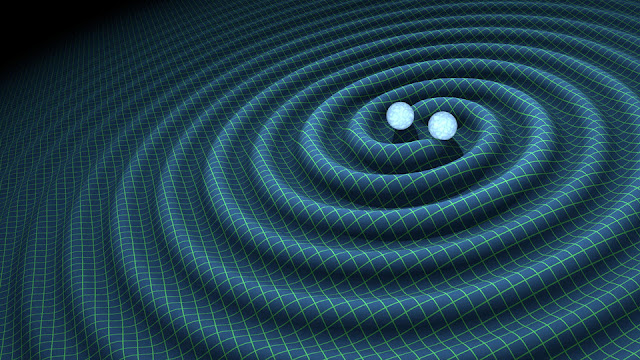Description :
The discovery of Einstein’s gravitational waves reported during a blockbuster announcement in a news conference on February 11, 2016 at Washington DC, is making waves all over the world. What’s the big fuzz about it though and why should we care? This article explores the question by taking a more in-depth look into the phenomenon.
The scientific community are still overwhelmed by the news of the breakthrough discovery of gravitational waves in the form of faint ripples of gravity, reverberating invisibly through the fabric of space-time from the collision of two black holes.
Laser Interferometer Gravitational-Wave Observatory (LIGO), designed to open the field of gravitational-wave astrophysics supported by Caltech and MIT, captured this groundbreaking moment in history reportedly on September 14, 2015. Nevertheless, what does the phenomenon entail in reality and why is it so important to us? We will try to demystify the latter in the next few paragraphs.
What Are Gravitational Waves?
The term gravitational waves was originally introduced by Einstein back in 1915 in establishing his theory of general relativity. The latter concept suggests that mass distorts both space and time similar to how a heavy bowling ball distorts a trampoline.
When an object accelerates, it creates ripples in space-time, in the same way a boat causes ripples in a pond. These ripples that allude space-time are called gravitational waves. Due to the fact that they are extremely weak signals, it is difficult to detect them. Therefore, although there's convincing indirect evidence that gravitational waves exist, a direct detection had proven elusive, until now.
Missions like LIGO and LISA are dedicated to detect these waves by observing small changes in the distances between objects at set distances. The most optimum opportunity to detect gravitational waves comes from detecting the collision of two black holes or pulsars into each other.
The Discovery
“We have detected gravitational waves. We did it,” Prof David Reitze, executive director of LIGO, told journalists. LIGO, uses the world’s most sophisticated detector, utilizing laser interferometry, which in simple terms means firing lasers into long, L-shaped tunnels; the waves disturb the light to detect the collision of black holes when they merged. A merger occurs when two black holes start to spiral towards each other and radiate energy as gravitational waves.
Scientists listened the characteristic sound of these waves, namely a chirp, for 20 thousandths of a second as the two giant black holes, one about 36 times the mass of the Sun, the other slightly smaller at 29 solar masses, circled around each other.
The signal detected, allowed them to calculate how stars perish: the two holes had begun by circling each other 30 times a second. Before the final collision and a dark violent merger had occurred at the end of the 20 millisecond snatch of data captured, the two had accelerated to 250 times a second!
The research findings from this study, undertaken by the LIGO Collaboration, have been published in the journal Physical Review Letters.
Signals of Gravitational Waves, As Einstein Predicted detected by the twin LIGO observatories at Livingston, Louisiana, and Hanford, Washington. Image Credit: Caltech/MIT/LIGO Lab
Why It Matters
The significance of detection of gravitational waves is attributed in the following key issues:
1. The discovery of gravitational waves opens a new window to research of the universe since it provides with insights on its existence and a potential paradigm shift on how we detect and study cosmic phenomena, in particular those that do not radiate in the electromagnetic spectrum.
2. The findings of this research confirm Einstein’s prediction of gravitational waves as part of his Theory of General Relativity and regenerate the interest in exploring the theory in depth.
3. Re-enforces the study on the use of gravitational telescopes which allows to hear phenomena at the same time as light-based telescopes see them.
4. Since gravitational waves were detected from the energy emitted from the collision of two black holes, it is now confirmed that black holes really do exist and that mergers between two black holes proceed as predicted.
Image by THE OFFICIAL ANDREASCY: Fast Facts about Gravitational Waves
In sum, the detection of gravitational waves opens the field to completely new investigation suggesting that some exciting days lay ahead for scientists. Stephen Hawking suggests that "gravitational waves could revolutionize astronomy".
In sum, the detection of gravitational waves opens the field to completely new investigation suggesting that some exciting days lay ahead for scientists. Stephen Hawking suggests that "gravitational waves could revolutionize astronomy".
Conclusion
Through this discovery we are one step closer to solving more of the mysteries of the universe following 380,000 years after it is thought to have been generated. And possibly the biggest mystery of it all: the 'Big Bang' singularity.
SOMETHING RELEVANT: Dreaming About the Future of Space Tourism
Have something to share about this story? Kindly let us know on Twitter (use #officialandreascy in tweet).
SOMETHING RELEVANT: Dreaming About the Future of Space Tourism
Have something to share about this story? Kindly let us know on Twitter (use #officialandreascy in tweet).

















